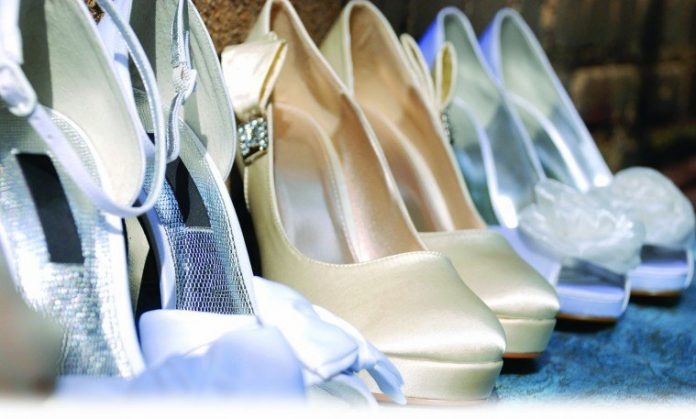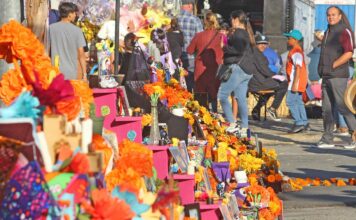Mirabelle Vargas, 29, winds her way through the open-air stalls in downtown Los Angeles’ bustling Santee Alley, hunting for Victoria’s Secret underwear. Or at least undies with a tag that says Victoria’s Secret. An authentic pair from the lingerie maker can cost $7.50 and up. But Vargas, a retail sales clerk, managed to find a table brimming with pink-and-white unmentionables. Price: two bucks a pop. “Of course they’re not real, not at this price,” said Vargas, decked out in a chocolate-brown Victoria’s Secret tracksuit, also counterfeit. “But the quality isn’t bad, and buying fakes saves a few bucks. You can find fake everything here.” Not that long ago, counterfeiters focused almost exclusively on upscale brands like Prada and Gucci. But five years of a weak economy has knockoff artists churning out goods for people with more modest tastes and budgets. At Santee Alley and other locations, you can find fake versions of shirts, pants and footwear by brands such as Gap, Dickies and Vans. “You are seeing stuff now you can find at Target, not just stuff you can find at Macy’s and Neiman Marcus,” said Lt. Mathew St. Pierre of the LAPD’s commercial crimes division. “Five years ago, we wouldn’t have seen $10 and $15 T-shirts being counterfeited like we do now.” St. Pierre said police are aware that counterfeits are being sold at Santee Alley and investigate regularly, but he added that combating knockoff artists is a constant battle fought with limited resources. No one keeps numbers, but fashion industry experts say cheap fakes have exploded in recent years, especially in California. “It’s a huge problem because we are inexpensive fashion brands,” said Ilse Metchek, president of the California Fashion Association. “We are Mecca for that. We are not Calvin Klein or Donna Karan. We are fast fashion. You can copy it within a week of appearance in retail stores and slap a label on it.” The economy is one reason for the trend. “The recession has more people trading down,” said Susan Scafidi, academic director of the Fashion Law Institute at Fordham University’s law school. “Even lower-priced brands feel like a stretch in this economy, and people are more likely to trade down to counterfeits.” There are several other factors driving the low-rent-counterfeit trend, including the Internet, a changing consumer mind-set and beefed-up anti-counterfeiting efforts by the giant apparel companies. The big luxury brands have cracked down hard. Last year, fashion label Tory Burch won $164 million in a lawsuit against a group of cyber squatters peddling fake shoes, purses and accessories. Chanel filed suit in September against 399 websites allegedly selling knockoff sunglasses, wallets, jewelry and other goods bearing the luxury retailer’s name. But with slim budgets and few employees, small brands can’t afford legions of lawyers and private detectives, making them less-risky targets for counterfeiters. “It’s a business-expansion strategy for the bad guys,” said Tom Taylor, president of brand protection for OpSec Security, a Boston firm that monitors counterfeiters. “The downturn left a lot of capacity open in factories in China and other parts of Asia, so they are coming up with ways to fill that capacity.” Shoppers themselves, meanwhile, are another factor. A low-paid clerical worker might have a hard time passing off a $10,000 Hermes tote as the real thing. But who would ask questions about $44 Toms shoes? “When you’re talking about middle-market brands with middle-of-the-road price points, you don’t have that stigma about counterfeits, people being suspicious about fakes, because the real thing isn’t that unattainable,” said Caleb Westbay, vice president of sales at Ed Hardy, a Los Angeles tattoo-themed street-wear brand. Until its worldwide licensing rights were sold last year, Ed Hardy had a dedicated anti-counterfeiting team that worked with the police to identify and track down knockoffs. In 2006, the brand started sewing anti-counterfeit strips onto its clothing labels, similar in idea to the security strips that go into dollar bills, Westbay said. “Counterfeit goods look authentic. Everything from quality and execution of product down to packaging and labeling and all that stuff,” Westbay said. “It’s tough to fight.” These cheaper items may ultimately make more money for counterfeiters than their luxury cousins because it’s easier to sell vast quantities of the lower-priced items. Many more people are likely to buy $15 counterfeit hoodies and sweat pants than shell out $100 for a fake Louis Vuitton handbag. “If there is profit to be made, things will be counterfeited, and it goes so far beyond luxury goods in terms of what is actually being counterfeited,” said Christine Hogue, who monitors counterfeits as an import advisory specialist for the U.S. Customs and Border Protection agency at the Los Angeles and Long Beach ports. The Internet has enabled counterfeiters to further elude authorities by cutting out the middlemen and selling directly to shoppers. The most ambitious counterfeiting websites have taken to copying photos and trademarks and registering dozens of domain names similar to the brand’s official website. Many shoppers, groomed by deals sites to expect heavy discounts, are duped into thinking they’re buying the real deal, said Scafidi of Fordham University. “The Internet is a much bigger risk than the guy setting up a table with handbags,” said Douglas Zarkin, vice president of marketing at Kellwood Co., owner of urban fashion brand Baby Phat, which has dealt with counterfeiters both online and off. “Technology allows people to put up a very professional-looking face when they are not professional people.” That’s something Jeffrey Campbell, a Los Angeles company known for colorful and edgy footwear, has experienced firsthand. Last fall, customers began asking why shoes they had ordered were taking so long to arrive, pointing to order numbers that Jeffrey Campbell had no record of handling, said company spokeswoman Sharon Blackburn. The company investigated and discovered a handful of websites, with names such as CheapJeffreyCampbell.com, masquerading as authentic vendors and selling versions of the company’s popular Lita boot, which retails for about $160, at a 60 percent to 70 percent discount, Blackburn said. The red flag: Some of the sites were peddling shoe styles specially created for clients and produced in very limited quantities, Blackburn said. Shoppers forked over their credit cards and received nothing. But there was little the company could do besides report the sites to PayPal and urge shoppers to be careful. The company previously had seen counterfeits of its shoes made by a Chinese manufacturer being sold on EBay. “Our loyal customers can tell the fakes and they don’t want them,” Blackburn said. “But we are not an Apple or Chanel or Gucci. Those are so recognizable that people immediately know the brand and the possibility that it’s a knockoff.”














